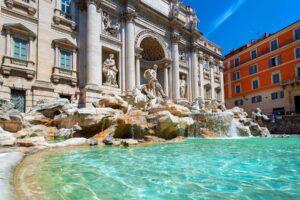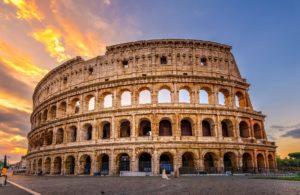Fodor's Expert Review Castel Sant'Angelo
Standing between the Tiber and the Vatican, this circular castle has long been one of Rome's most distinctive landmarks. Opera lovers know it well as the setting for the final scene of Puccini's Tosca. Started in AD 135, the structure began as a mausoleum for the emperor Hadrian and was completed by his successor, Antoninus Pius. From the mid-6th century the building became a fortress, a place of refuge for popes during wars and sieges.
Its name dates to AD 590, when Pope Gregory the Great, during a procession to plead for the end of a plague, saw an angel standing on the summit of the castle, sheathing his sword. Taking this as a sign that the plague was at an end, the pope built a small chapel at the top, placing a statue next to it to celebrate his vision—thus the name, Castel Sant'Angelo.
In the rooms off the Cortile dell'Angelo, look for the Cappella di Papa Leone X (Chapel of Pope Leo X), with a facade by Michelangelo. In the Pope Alexander VI courtyard,... READ MORE
Standing between the Tiber and the Vatican, this circular castle has long been one of Rome's most distinctive landmarks. Opera lovers know it well as the setting for the final scene of Puccini's Tosca. Started in AD 135, the structure began as a mausoleum for the emperor Hadrian and was completed by his successor, Antoninus Pius. From the mid-6th century the building became a fortress, a place of refuge for popes during wars and sieges.
Its name dates to AD 590, when Pope Gregory the Great, during a procession to plead for the end of a plague, saw an angel standing on the summit of the castle, sheathing his sword. Taking this as a sign that the plague was at an end, the pope built a small chapel at the top, placing a statue next to it to celebrate his vision—thus the name, Castel Sant'Angelo.
In the rooms off the Cortile dell'Angelo, look for the Cappella di Papa Leone X (Chapel of Pope Leo X), with a facade by Michelangelo. In the Pope Alexander VI courtyard, a wellhead bears the Borgia coat of arms. The stairs at the far end of the courtyard lead to the open terrace for a view of the Passetto, the fortified corridor connecting Castel Sant'Angelo with the Vatican. In the appartamento papale (papal apartment), the Sala Paolina (Pauline Room) was decorated in the 16th century by Perino del Vaga and assistants with lavish frescoes of scenes from the Old Testament and the lives of St. Paul and Alexander the Great.
READ LESS









